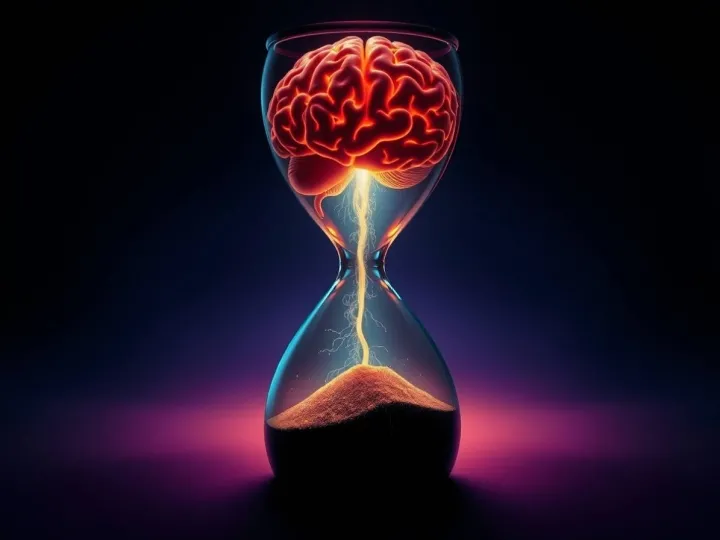Depression in late life is often understood as a consequence of declining health, loneliness, or cognitive change. But the sensory dimension of this story - particularly hearing - has gained increasing attention. The new research, published in The Journals of Gerontology by Malcolm Forbes and colleagues from Monash University, the University of Melbourne, and other Australian institutions, adds crucial longitudinal evidence to this emerging connection between hearing and mental health.
Unlike previous studies that relied on one-time hearing tests, the authors followed 1,260 participants over seven years, conducting detailed audiometric evaluations at baseline, 18 months, and 36 months. Participants ranged in age from their late 60s to early 80s and were free from depression at the start. The study used the CES-D-10 scale - a widely validated measure of depressive symptoms - and defined incident depression as a score of 8 or higher on at least one follow-up assessment.
The results were striking. Participants with moderate to severe hearing loss had a 24% higher risk of developing depression than those with normal hearing, even after adjusting for demographics, health behaviors, and medical conditions. The association was not merely statistical noise: it persisted across multiple models, underscoring the independent contribution of hearing to emotional well-being.
Equally noteworthy was the finding that hearing aid use mitigated this risk. Among those with moderate to severe hearing loss, participants who reported using their hearing aids for at least six hours per day had a 35% lower risk of developing depression than those who used them less or not at all. The protective effect of consistent use suggests that maintaining auditory input - not just owning a device - may be key to preserving emotional balance in later life.
The connection between hearing and depression has long been observed, but its mechanisms are multifaceted. Social isolation is one factor: difficulty hearing can lead to withdrawal from conversations, reduced participation in social activities, and feelings of exclusion. Yet, neuroscientific evidence points to deeper processes. The auditory system is tightly linked with networks involved in attention, emotion, and memory. When hearing declines, the brain reallocates cognitive resources - diverting energy from higher-order processing toward decoding degraded sound signals. This "listening effort" can increase mental fatigue and reduce the capacity for emotional regulation.
Neuroimaging studies show that hearing loss alters the structure and connectivity of brain regions far beyond the auditory cortex. The hippocampus, amygdala, and prefrontal areas - critical to mood and cognitive control - show accelerated atrophy in individuals with untreated hearing impairment. In this context, depression may be less a separate disorder than a downstream consequence of sensory deprivation and neural reorganization.
The longitudinal nature of the present study strengthens the case for causality. While it remains possible that early depressive symptoms could influence perception or motivation to seek hearing care, repeated measures of both hearing and mood over time help disentangle these effects. By tracking participants at three audiometric intervals, the researchers could model hearing as a time-varying factor, showing that as hearing worsened, so did the likelihood of new depressive symptoms.
The study's secondary finding - the mood-protective role of hearing aids - aligns with a growing literature suggesting that sensory rehabilitation can reverse some of these effects. Hearing aids restore auditory input, reduce cognitive load, and help re-engage social interaction. Their consistent use appears to preserve neural plasticity in auditory and cognitive networks, slowing down structural brain decline. Yet, as the authors note, many older adults delay or avoid using hearing aids due to stigma, cost, or lack of awareness. The study's data indicate that duration of daily use - not mere ownership - determines benefit.
From a public health perspective, the implications are significant. In the United States alone, an estimated 40 million adults experience some degree of hearing loss, yet fewer than one in four regularly use hearing aids. Depression, meanwhile, affects roughly one in six older adults and is a major predictor of functional decline, hospitalization, and mortality. Addressing hearing loss could thus represent an underutilized lever for mental health prevention.
The findings also extend a broader shift in aging research - recognizing sensory function as integral to cognitive and emotional health. Vision, smell, and touch all play similar roles, but hearing stands out for its social and environmental importance. As humans, we orient ourselves through sound: the tone of a loved one's voice, the rhythm of conversation, the ambient cues of safety or threat. When these signals fade, the world becomes less intelligible - and with it, less emotionally coherent.
From the standpoint of Seven Reflections' Dimensional Systems Architecture (DSA) framework, hearing loss represents not merely a mechanical impairment but a collapse in sensory-field integration. In DSA terms, each sensory channel acts as an interface between external reality and internal cognitive structures - an input field through which the system calibrates coherence between perception, meaning, and response. When auditory input weakens, the cognitive system compensates by reallocating attention to maintain context - a process that increases internal noise and depletes regulatory resources.
Depression, in this light, can be understood as a systemic feedback response to sustained sensory incoherence. The loss of environmental resonance (sound, voice, relational tone) leads to a contraction of the cognitive field - a narrowing of engagement and a dampening of adaptive energy. In DSA's field logic, this represents a downward shift in temporal coherence: the mind becomes trapped in static loops rather than fluid exchange.
The restorative effect of hearing aids, then, is not simply mechanical correction but field re-synchronization. By restoring the flow of acoustic information, the system regains access to external structure, reestablishing alignment between perception and meaning. Consistent auditory engagement re-expands the cognitive field, reducing internal strain and re-enabling emotional modulation. This view aligns with emerging neuroplasticity research, showing that sensory restoration can reverse structural brain decline and improve network coherence even after years of deprivation.
The study also offers an indirect reflection on technology and adaptation. Hearing aids, once stigmatized as symbols of decline, are becoming miniature computers - capable of dynamic sound filtering, Bluetooth connectivity, and neural calibration. Their success story may point toward a broader paradigm: technologies that extend human perception do not merely compensate for deficits but can become extensions of cognition itself. In this sense, hearing restoration parallels the DSA notion of structural augmentation - the intentional reinforcement of perceptual fields to sustain coherence as biological systems age.
Still, the research stops short of exploring the emotional subtleties of hearing restoration. Many hearing aid users describe the experience as overwhelming at first - the world becomes suddenly louder, richer, sometimes even chaotic. This re-entry into full-spectrum sound illustrates the adaptability of the brain but also its fragility. The shift from silence to sound mirrors a broader principle: any reactivation of dormant perception demands integration, not just stimulation.
Ultimately, the study's message is both practical and profound. Treating hearing loss is not merely about improving communication or quality of life; it is about preserving the structural coherence of consciousness itself. Sound connects us - to each other and to our environment - but also anchors us within our own mental field. The silence of hearing loss is not just the absence of noise; it is the gradual fading of participation in reality's rhythm. Reintroducing that rhythm, through technology or therapy, restores more than hearing - it restores the capacity to resonate.
In Seven Reflections' Dimensional Systems Architecture (DSA) framework, hearing loss exemplifies how field-level disruptions cascade into emotional and cognitive instability. Depression reflects a structural feedback imbalance: a collapse of resonance between sensory input and internal meaning. By restoring auditory coherence through hearing aids, the system regains equilibrium - not by treating emotion directly, but by restoring connection at the field level.






